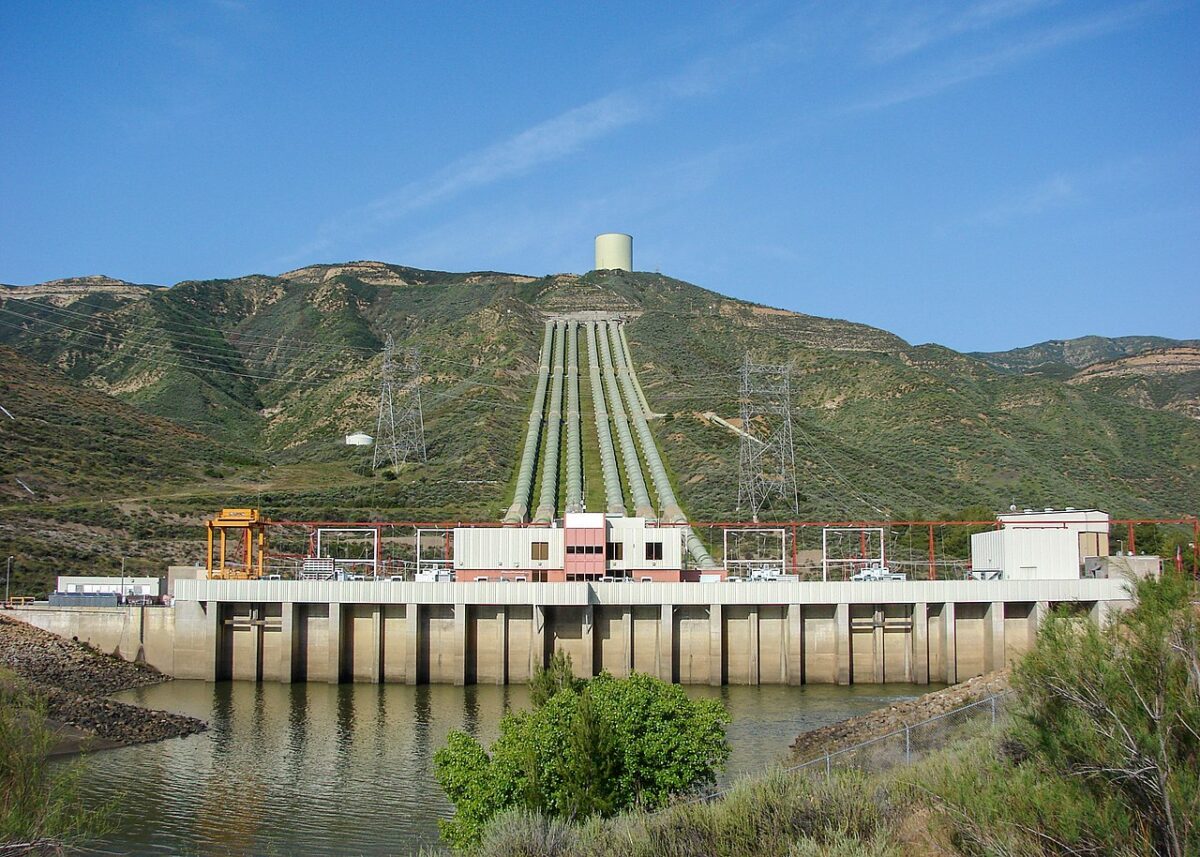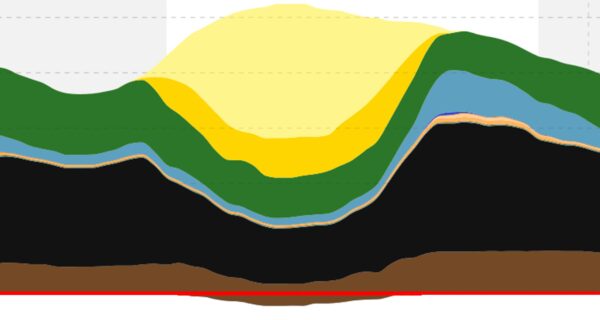| | Energy storage is a solved problem
There are thousands of extraordinarily good pumped hydro energy storage sites around the world with extraordinarily low capital cost. When coupled with batteries, the resulting hybrid system has large energy storage, low cost for both energy and power, and rapid response. Storage is a solved problem.
October 8, 2024 pv magazine

Image: Wikimedia Commons
Share
    
From pv magazine Global
In 2023, twice as much solar generation capacity was installed as all other generation technologies combined. The future of energy generation is solar photovoltaics with support from wind energy, and energy storage to balance the intermittency of wind and solar.
At a minimum, overnight energy storage is required. At present, pumped hydro energy storage (PHES) provides more than 90% of the global total for the electricity industry. Batteries are rising in importance. Demand management is an important development – for example, electric vehicles, hot water tanks and thermal storage in factories can be charged when demand is low and supply is high. Electric vehicles also offer “batteries on wheels” with vehicle to grid (V2G).
Thermal power stations (coal and gas) can follow the load and act similarly to storage. For example, in Australia’s National Electricity Market, coal power stations typically scale back production during the daytime to half the production during the evening peak period. Some even switch off altogether for a few hours during the middle of the day. The motivation is to avoid negative prices on sunny and windy days.
For example, the figure shows power production from midnight to midnight during 4th October 2024 in Australia’s National Electricity Market (serving 20 million people), including coal (brown and black), gas (orange), hydro (blue), wind (green) and solar (yellow). Power demand peaked around noon at 27 GW. The region below the red line represents charging of PHES and battery storage. Prices were negative from 0700 to 1600. Coal power varied from 7 GW in the middle of the day up to 15 GW during the evening peak.

Power curveImage: ISES
Energy storage
As fossil fuel power stations close due to old age and competition from low-cost solar and wind, the gap must be filled by large-scale storage. When the amount of solar and wind energy is less than about 50%, batteries with a storage capacity of a few hours are preferred. Eventually, large energy storage is required, to cover overnight and several days of cloudy weather. This is the role of PHES.
Hybrid storage systems that combine batteries and PHES are superior to either technology alone. Batteries are relatively inexpensive for storage power ($/GW) but are expensive for energy storage ($/GWh). PHES is more expensive than batteries for storage power ($/GW) but much cheaper for energy storage ($/GWh). A hybrid system has both cheap energy (GWh) and cheap power (GW).
In a hybrid system, storage can charge storage. A large PHES reservoir can trickle charge batteries 24/7 for a week during a calm and cloudy period. For example, a PHES system with 350 GWh of energy storage and 2 GW of generation power can trickle charge twelve 4-hour batteries (48 GWh) every day for a week. Such a hybrid system effectively has energy storage of 370 GWh and storage power of 12 GW. A battery-only system would run out of energy after the first day, while a PHES-only system would be underpowered.
An additional advantage is that the batteries can harvest negative prices for four hours around noon with a power of 12 GW, and trickle charge a large but low-power PHES system for the next 20 hours – and do this every day for a week before the PHES system is full. In other words, the hybrid system harvests peak power prices at 12 GW and is recharged at negative prices.
The Global Pumped Hydro Energy Storage Atlas lists 820,000 sites with combined energy storage of 86 million GWh. This is equivalent to the effective storage in about 2,000 billion electric vehicles, which is far more storage than the world will ever need. Thus, only the very best sites are required. The key cost parameters are large head (height difference between the upper and lower reservoirs, preferably 600-1600 m), large water-rock ratio (a large volume of water is impounded by a relatively small rock wall, preferably 15-50) and short pressure tunnels (a few km).
Extraordinary PHES sites have extraordinarily low capital costs. Cost estimates that apply to ordinary hydro projects do not apply to premium sites. There is a factor of 10 difference in the capital cost of the best and the least good sites in the Atlas. Because there is a large surplus of sites in most regions, only the very best sites need ever be developed. Importantly, PHES are capital-intensive investments but have far longer expected lifetimes than batteries.
Extraordinarily good PHES sites can be found in most regions of the world, with extraordinarily low capital costs. For example, the Snowy 2.0 PHES system under construction in Australia has an expected capital cost of US$8 billion for 350 GWh of storage, which amounts to US$23 per kWh ($8B/350GWh). This is about 10 times lower than the capital cost of an equivalent battery. Australia has dozens of potential sites with similar costs.
Many regions have better PHES potential than Australia, including thousands of sites with indicative capital costs of $10-15/kWh. Large size in the range of 50 to 5000 GWh is preferred, which is sufficient storage for 1 million and 100 million affluent and fully electrified people respectively. The figure shows the location of 500 GWh sites throughout the world. One region with a notable lack of good sites is northern Europe. Fortunately, the Balkans have excellent PHES potential, far more than enough to provide the European Union with all the storage it requires.

The Atlas
Within the Atlas, the best sites are marked with stars (cost Class AAA), triangles (Class AA), or dark red dots (Class A). Greenfield means 2 new reservoirs; Bluefield uses an existing reservoir; Brownfield uses a defunct mine; and Turkeynest means flat land. Users can pan, zoom, rotate, and tilt. Clicking on a reservoir or a tunnel route produces different information popups containing 26 items of detailed information. Different sizes can be selected in the lefthand pane in the range 2 to 5000 GWh. Select MapSettings/3D Terrain for a 3D view. Aqueducts or low-pressure tunnels in flat land often allow shorter pressure tunnels. The cost of new transmission can usually be shared with new solar and wind farms. Most of the Atlas sites are off-river and do not require any new dams on rivers. An indicative cost model is included.
Authors: Prof. Ricardo Rüther (UFSC), Prof. Andrew Blakers /ANU
Andrew.blakers@anu.edu.au
rruther@gmail.com
ISES, the International Solar Energy Society is a UN-accredited membership NGO founded in 1954 working towards a world with 100% renewable energy for all, used efficiently and wisely.
pv-magazine-usa.com |
|







